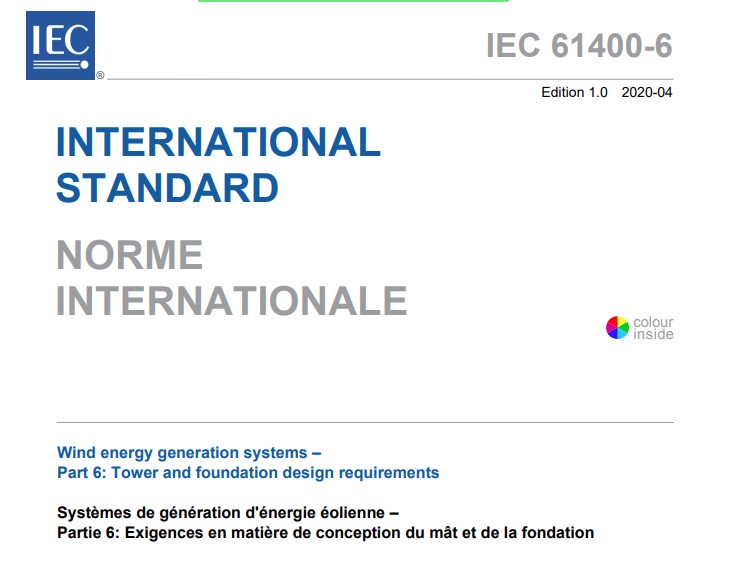
The IEC (acronym of International Electrotechnical Commission) has just released a new design code. More precisely it is a new section of an existing code, the IEC61400.
The IEC is an international organization that prepares and publishes international standards for all electrical, electronic and related technologies, including energy production and distribution devices.
The IEC 61400 is a set of design requirements developed specifically for wind turbines – to be sure that they are appropriately engineered against damage from different type of hazards within the planned lifetime (currently, 20 to 30 years). If you are familiar with the wind business you will probably know that this is one of the key international standards.
The IEC 61400 has several sections.
Section 1 deals with the wind turbine loads (more precisely, “design requirements”) in most of the world. A relevant exception would be Germany and some of neighbouring countries, where DIBT is used.
The new section released is the IEC 61400-6:2020 Tower and foundation design requirements.
If you are a wind turbine foundation designer, you are already aware that there is not really and internationally accepted design reference for wind turbines: there are some national references (such as the French CFMS Recommendation, or the Chinese FD 003-2007), some guidelines from certification bodies (such as the DNV guidelines), and recommendations from associations (AWEA for example has a recommendation for foundation design, but not a specific code for wind turbine foundation).
If we assume a similar applicability of this code as the one from the IEC61400:1 my opinion is that this is going to be one the more relevant technical reference (if not the most important) in the market for the next few years.
I am not going to enter deep into the technical detail of this standards, but there are a few points I would like highlight:
- The new standard specify that foundation gapping does not need to be the limiting factors for foundations in all the cases. This opens the option to reduce the foundation size importantly when the soil is good enough.
- Specifies the applicable codes for concrete design and provide guidance in how to perform some calculations (for instance cracking, dynamic shear modulus, etc…)
- Has a set of very interesting annexes providing specifics about seismic calculation, strut and tie modelling, rock anchors, etc…
- Specifies that there should not be decompression of the tower flange under the extreme (un-factored) loads.
- Provides guidance about how to apply the sub pressure and perform the equilibrium verifications (this may modify some existing practises in some countries).
There are several interesting sections in this code, and many about towers and concrete towers that I have not yet analysed deeply but it seems that we might see some changes in the way we design at the moment.
It looks somehow unusual that this code has been issues by an Electrotechnical Commission – given the subject, it looks more like a code that should have been created by an institution of civil/structural engineers.
However I also believe that this type of reference and guidance was much needed in the sector, so I am happy that the IEC had taken the initiative of releasing such code.
Leave a Reply